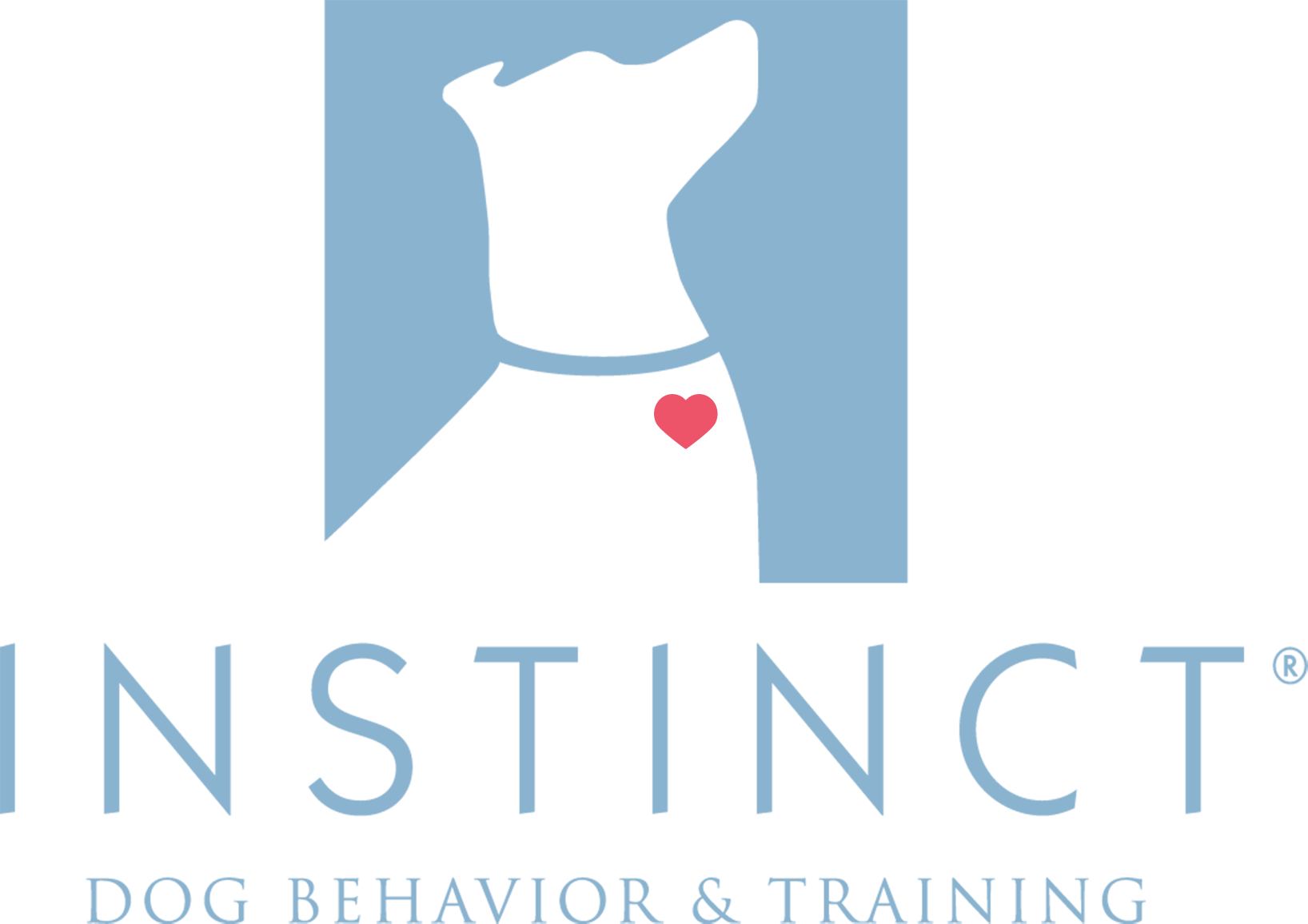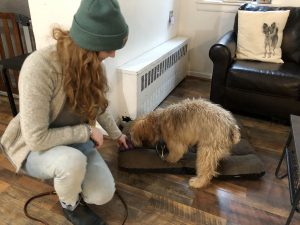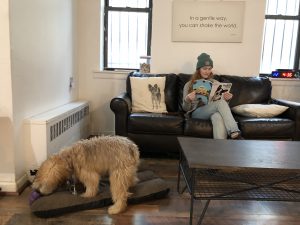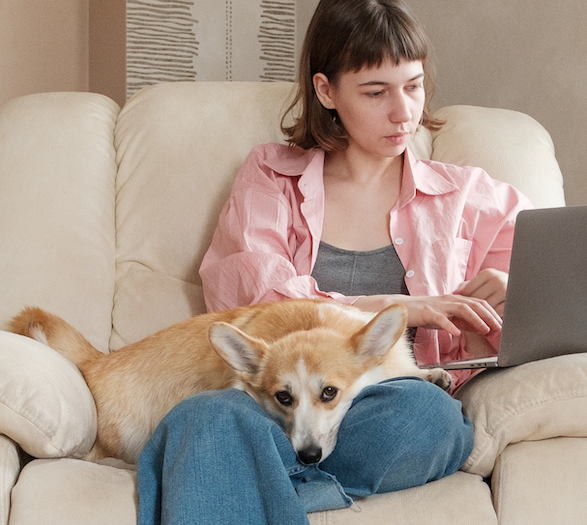Do you have an active young dog who never stops moving, except when they’re asleep? Tether Time can be a great, effective way to teach puppies and adolescent dogs how to relax and settle at home. With practice, your busy young dog will begin to appreciate (or at least tolerate) The Art of Doing Nothing :).
What is Tether Time?
Tether Time is a relaxation & settling exercise. During short periods of time (typically 10-30 minutes), your dog is tethered on ~3 feet of leash, with access to a comfy bed and a long-lasting chew – this is your Tether Station. The leash can be affixed to the leg of a heavy sofa, or to an eye-hook you install securely in the wall.
Rules of Engagement
- Requires Adult Supervision. Tether Time is ALWAYS a supervised activity; dogs should never be left alone on a tether.
- No Petting Allowed. Do not let anyone invade your dog’s personal space or pet them during Tether Time. The Tether Station is your dog’s own personal zen zone, no humans allowed. Why? If your dog becomes uncomfortable with an interaction while tethered, they are unable to move away and avoid that person’s attention.
How to Introduce Tether Time:
When introducing your dog to Tether Time, follow these steps to ensure it’s a low-stress, relaxing experience for both you and your dog:
For the first 4-6 repetitions, practice only during quiet, LOW DISTRACTION times. Make sure your dog has already received some mental stimulation and physical exercise, and they’ve recently eaten and had a chance to use the bathroom.
- Invite your dog onto their bed and reward them with a treat. Attach the tether to their flat collar or harness. Then, provide them with a yummy bone or a favorite long-lasting chew.
- Stay Close! Take a seat in a nearby chair so that you are just a few inches outside of your dog’s reach. Being on a tether is a new experience for some dogs; by staying nice and close, you are helping your dog feel secure that mom or dad is right there with them, and there’s nothing to be concerned about.
- Ignore your dog while they are tethered. This is harder than it sounds, so try reading a book or checking emails on your phone. If your dog fusses a little or lets out a few barks, just continue focusing on your reading or your phone as if Tether Time is the most normal activity in the world.*
- Untether your pup as soon as they finish their bone or chew, OR after 5 minutes (whichever comes first). When you remove the tether, do so unceremoniously – don’t make a big fuss or lather them in attention. They can choose to walk away from the Tether Station or hang out a little longer.
Make Tether Time a Part of Everyday Life
After 4-6 repetitions, you can start to gradually increase the length of time your dog stays on their tether. Try adding a minute each time you practice, until you reach 30 minutes. You can begin to sit a little farther away. Do this in small increments and watch for any signs that your dog is becoming more stressed (persistent pulling at the end of the tether, steady barking or yipping, or stress panting). That’s your cue to move back to a distance where your dog is more comfortable.
Start to occasionally get up and walk to the kitchen to grab a glass of water, or to another room to grab something, then return to your spot, all the while ignoring your dog. Practice at different times of day and under more distracting circumstances.
Before long, your dog will start to learn that Tether Time is a cue to settle in and get comfy, because nothing much is happening. It’s a great skill to use during (human) mealtimes, guest visits**, or whenever you feel like your dog is having trouble relaxing, even after their exercise and mental stimulation needs have been met.
Happy Training!
*If you have a dog who has separation-related anxiety issues, or other significant fear or anxiety issues, or if your dog becomes significantly frustrated or distressed during the initial stage of the exercises, please reach out to a certified dog behavior consultant for help before proceeding.
**If you have a dog who behaves fearfully or aggressively toward guests, Tether Time may not be an appropriate option during visits. Please contact a certified dog behavior consultant for help with an appropriate guest routine that focuses on helping your dog feel more relaxed and comfortable.






